Everything You Need to Know About Dog Sledding
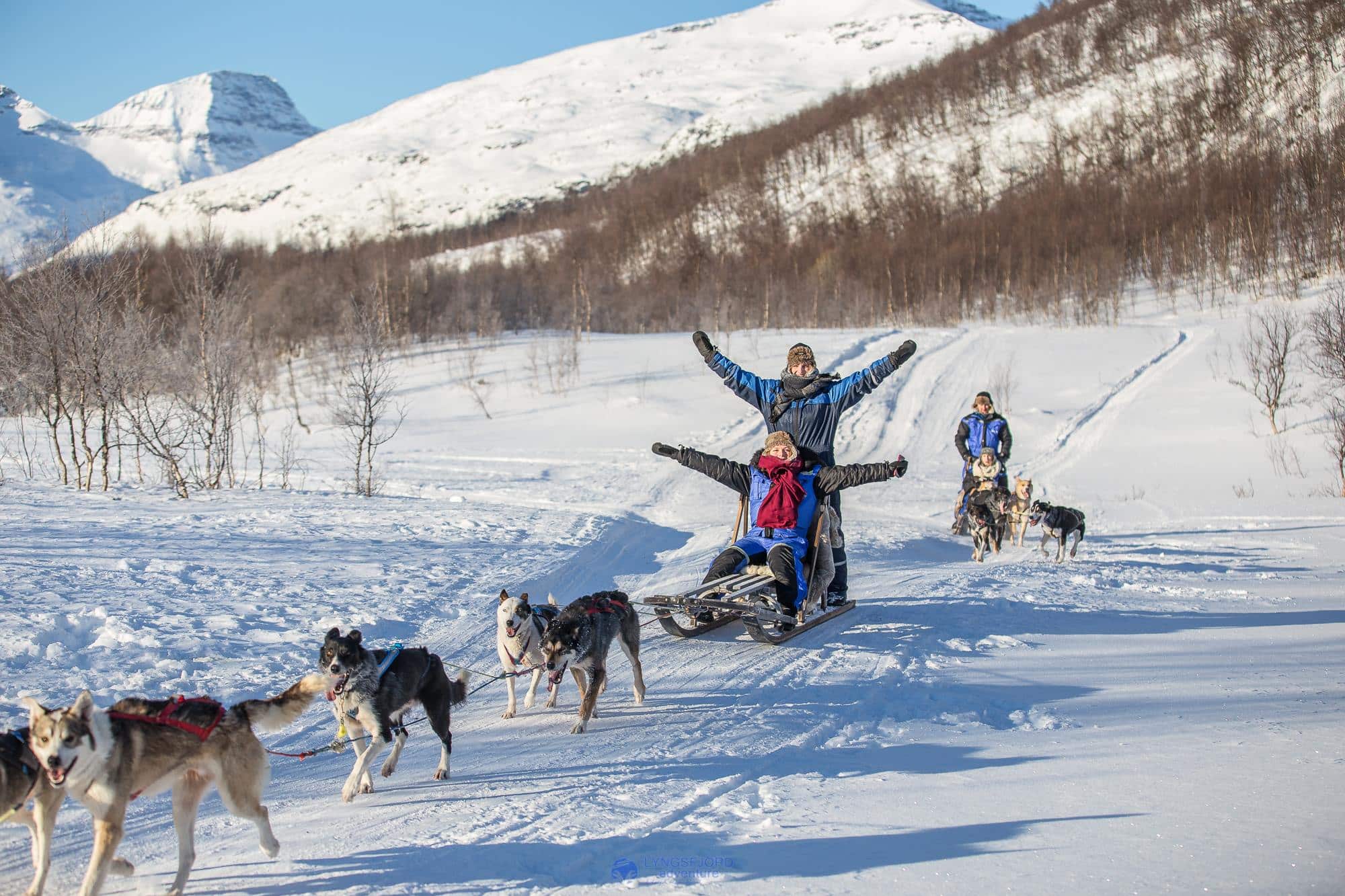
From historical anecdotes to the best destinations for dog sledding, discover everything you need to know in this dog sledding guide! After all, what could be more exciting than travelling through snowy valleys on a sled?
Let the sound of the sleigh sliding on the snow, the lightweight padding of dogs running, and their heavy breathing be music to your ears as you explore the mountainous landscapes. During your dog sledding excursion, you can just sit back and relax while admiring the spectacular views. Let yourself be carried away by the beauty around you and, of course, the adorable husky dogs.
While this adventure packs a lot of adrenaline and fun, like any other activity, there are a few common questions you might have before you book your dog sledding activity...
What is Dog Sledding?
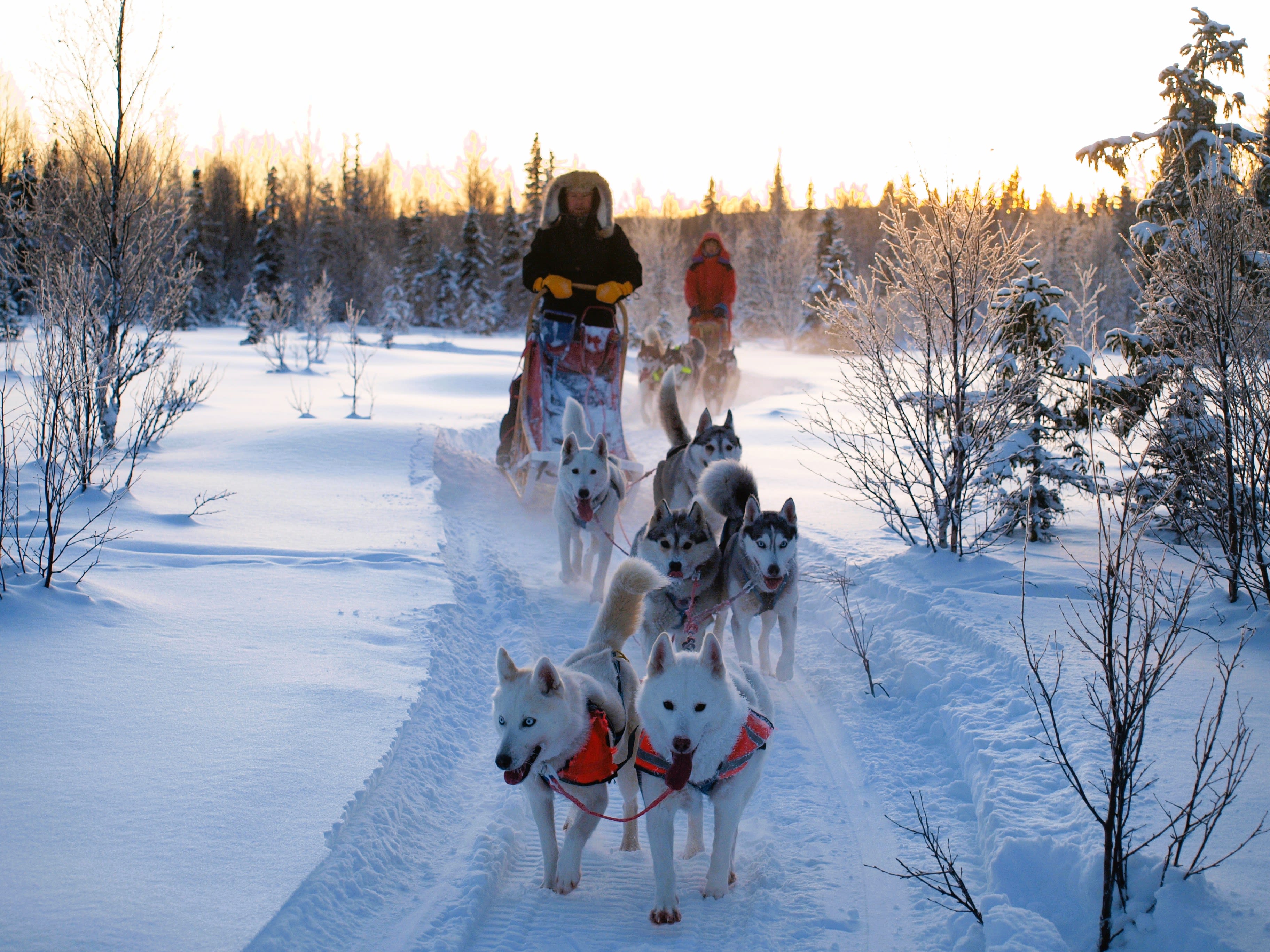
Dog sledding is an ancient means of transport and a cultural tradition, which finds its origins deeply embedded in the history of human civilization. Dog sledding originated, as far as archaeologists can determine, among the native and Inuit people in the northern regions of modern-day Canada, back in 6000 BC. It allowed communities to cross vast territories of frozen ground, haul supplies and even hunt wild animals for survival. While some northern populations still use dog sledding to travel across icy tundra, today it is primarily used for entertainment and competitive sport. This practice is cherished for its endurance, camaraderie between humans and dogs but it is also a unique way to connect with nature and wildlife.
Also known as mushing, dog sledding involves harnessing a team of dogs to a sled and guide them through snow-covered terrain. A person who travels by dog sled is called a "musher," that's why we often call the practice "mushing". The dogs on a musher's dog sled team are chosen carefully; each dog has a specific job to do: the dogs are connected to one another by a lengthy "gangline" that runs through them. The "lead dog," who stays ahead of the pack, is regarded by many mushers as the most crucial animal in the group. "Swing dogs" assist the lead dog in turning the pack by trailing behind it. The "team dogs" follow the swing dogs, giving them more speed and momentum.
Who drives the sled?
The sled is usually driven by a professional musher. Mushers know the area like the back of their hand and take great care of the animals. Some activities do offer the chance for participants to perform a self-drive dog like for example in Kopperå, Norway, where you will be driving on your own with a professional guiding you along the way.
Driving the sled yourself is a more interactive way to enjoy dog sledding and it's also a chance to experience what it’s like to be a real musher. The instructor will explain how to manage the sled, how to stop, and how to give the right commands to the dogs.
What clothes should you bring for a dog sledding activity?
When preparing for a mushing excursion, it's essential to dress appropriately to stay warm, comfortable, and protected. Here are some recommendations for clothing :
- Winter jacket: be sure to wear a warm jacket that is water-resistant or waterproof!
- Snow pants: we suggest you put on some insulated pants to keep you legs warm to protect them from snow, cold wind and negative temperatures.
- Gloves: keep your hands warm and opt for gloves with a good grip since you may handle equipment or ropes.
- Hat and scarf: covering your ears and neck from the icy winds is very important!
- Layering: dress in layers to trap the heat to your body and provide flexibility in adjusting to changing temperatures.
- Winter boots and wool socks: to prevent cold-related injuries and maintain comfort and mobility by keeping your feet warm.
- Sunglasses: to protect your eyes from glare and snow blindness with UV protection.
Also, it is recommended that you bring a backpack with the following items:
- A very warm blanket
- You can also bring a thermal flask, snacks, and bottled water
- High-protection sunscreen, to apply on exposed skin, especially on your face to protect against sunburn!
How old do you need to be to ride on the sled?
The age requirement for riding a sled can vary on many factors like local regulations, safety guidelines, and sled operators. However, in most cases, the minimum age required to ride on a dog sled is 2 years. In general, children as young people can enjoy a mushing ride under adult supervision, especially on gentle slopes and controlled environment!
Parents need to look for the age recommendations of the operator before booking a dog sled excursion, it is essential to prioritize safety.
What is the maximum weight and number of people?
The dogs can pull a maximum weight of 200 kg (440 lbs) per sled. Therefore, generally, one sled can accommodate two to three people maximum. Some sleds, do permit extra riders, however, these sleds are bigger and pulled by more dogs.
In some activities, the sled professionnals will provide the guidance concercing the weight of passengers to ensure the well-being of both dogs and adventurers during the excursion.
Do you need to know how to ski?
No, you don't need to know how to ski to enjoy a dog sledding excursion. It is a separate activity from skiing, and it doesn't require any skiing skills. However, if your dog sledding adventure includes remote and challenging terrain where skiing might be necessary for transportation or exploration, then knowing how to ski is beneficial.
How fast do dog sleds go?
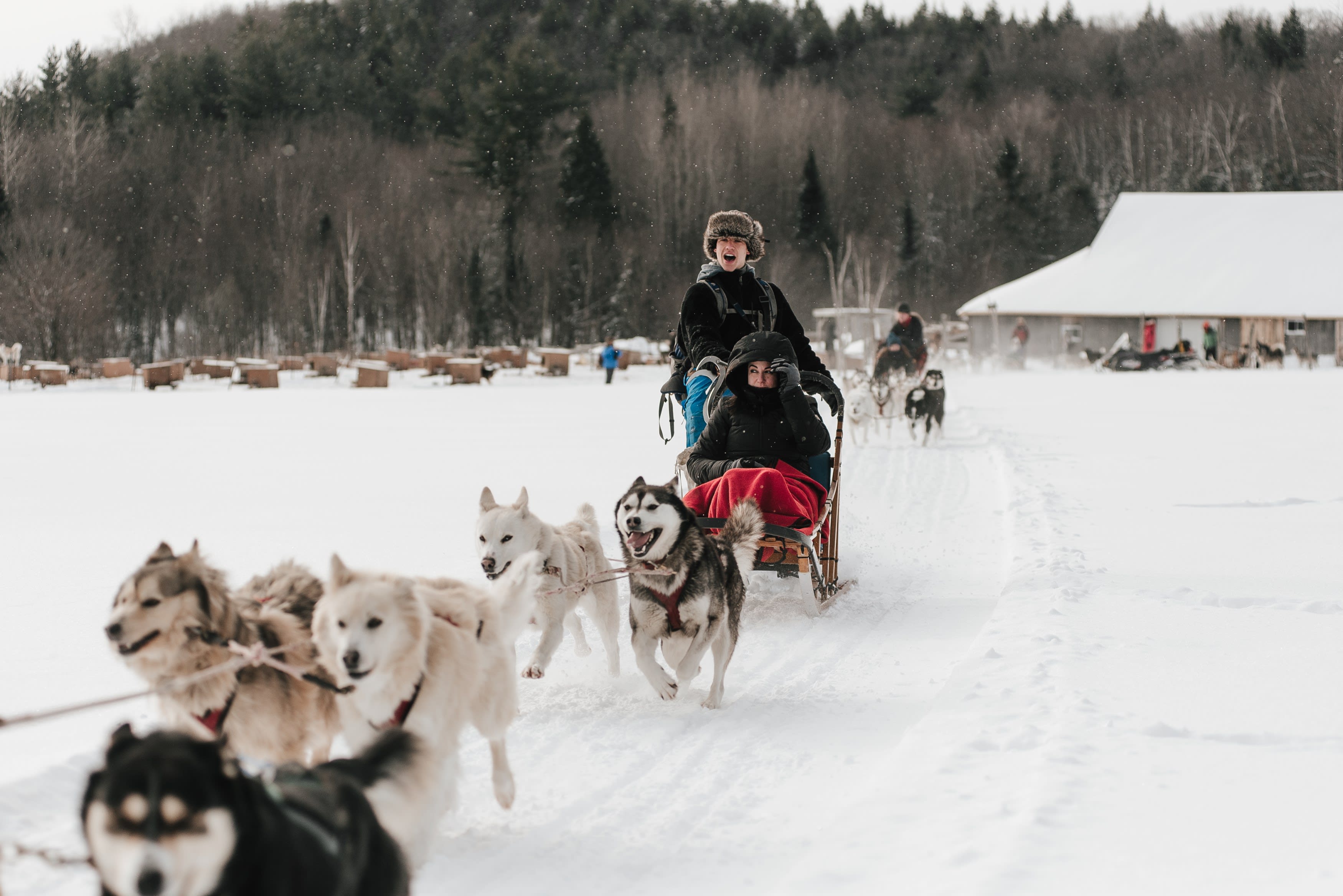
Sled dogs travel at an average speed of 25 to 30 km/h (15 to 18 mph) on journeys of around 40 km (25 miles) long. On longer trips, the average speed drops to 16 to 22 km/h (10 to 14 mph), even in bad conditions.
Racing sleds weigh a mere 9 to 13.5 kg (20 to 30 pounds), so the lighter the load the faster the dogs can pull. Speed can also be dependent on how recently it has snowed. The soft, fresh snows make it harder to pull the sled, while the rails can slide easily and quickly over icy roads.
How long does a dog sledding adventure last?
Everything depends on the package you decide to choose. The excursions vary according to the length of the route, so it can last anywhere between 20 minutes to 5 hours. Some guides even offer multiple day-long tours through the arctic tundra.
What breed of dogs pull sleds?
Dogs of various breeds from all over the world are bred specifically for sledding. Alaskan Huskies, for example, are a mixture of Siberian Husky and Alaskan Malamutes, they weigh around 18-34kg (40 to 75 lbs). Alaskan Malamutes are heavier, and stronger, weighing up to 54 kg (119 lbs). The Canadian Eskimo dog is another kind of sled dog, used mostly for pulling in Arctic Canadian regions.
The Chinook is a rare breed of sled dog with great endurance. Then there are Greenland dogs, who are slow but can pull for long distances. Lastly, Siberian Huskies, are used commonly to pull sleds. They are smaller than a malamute but stronger. Samoyeds are also used occasionally but are historically prized more for their beauty. Some sled dogs can travel long distances, from 8 to 130 km (4 to 80 miles) or more, in a single day!
How many dogs are there per sled?
Depending on the weather conditions, the team is composed of 6 to 20 dogs. Each dog has a specific place in the line and a specific function within the team. The leaders of the pack, of course, take their places at the front of the sled.
Where to go dog sledding?
Discover the most picturesque destinations to go dog sledding. From the pristine landscapes of Scandinavian countries to the large Canadian territory, embark on a thrilling adventure...
Kiruna, Sweden
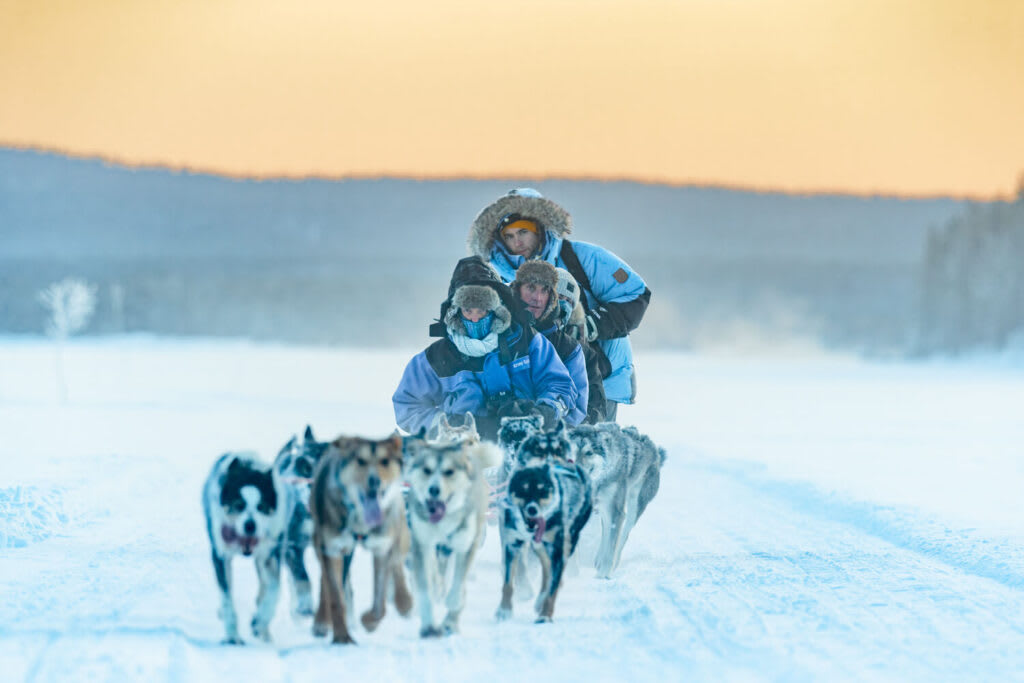
The lovely Lapland region of northern Sweden is home to the city of Kiruna. Situated slightly to the north of the Arctic Circle, it offers typical Arctic winter conditions, such as frozen and snow-covered landscapes. Going on a dog sledding excursion in Kiruna is the best way to enjoy the wilderness of Swedish Lapland!
Tromso, Norway
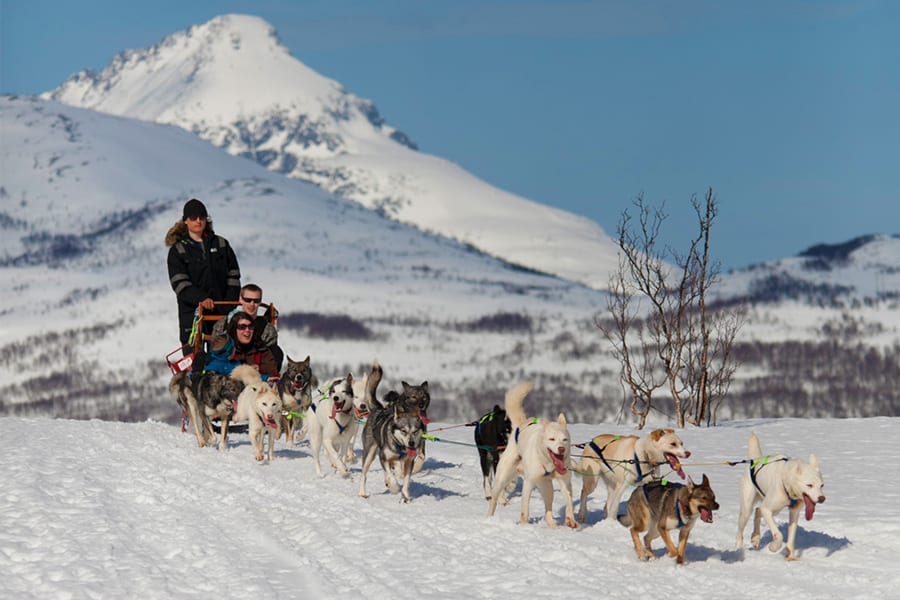
Dog sledding is a great activity in the Tromsø region because of its arctic nature, the polar and Northern lights, and the breathtaking views. Thanks to the Gulf Stream's warming effect, the temperatures near Tromsø are surprisingly mild for the latitude. Enjoy a comfortable one-hour sled ride or go on a full-day dog sledding excursion, while taking endless photos of the expansive scenery and happy dogs! Discover all you need to know about dog sledding in Tromso.
Quebec region, Canada
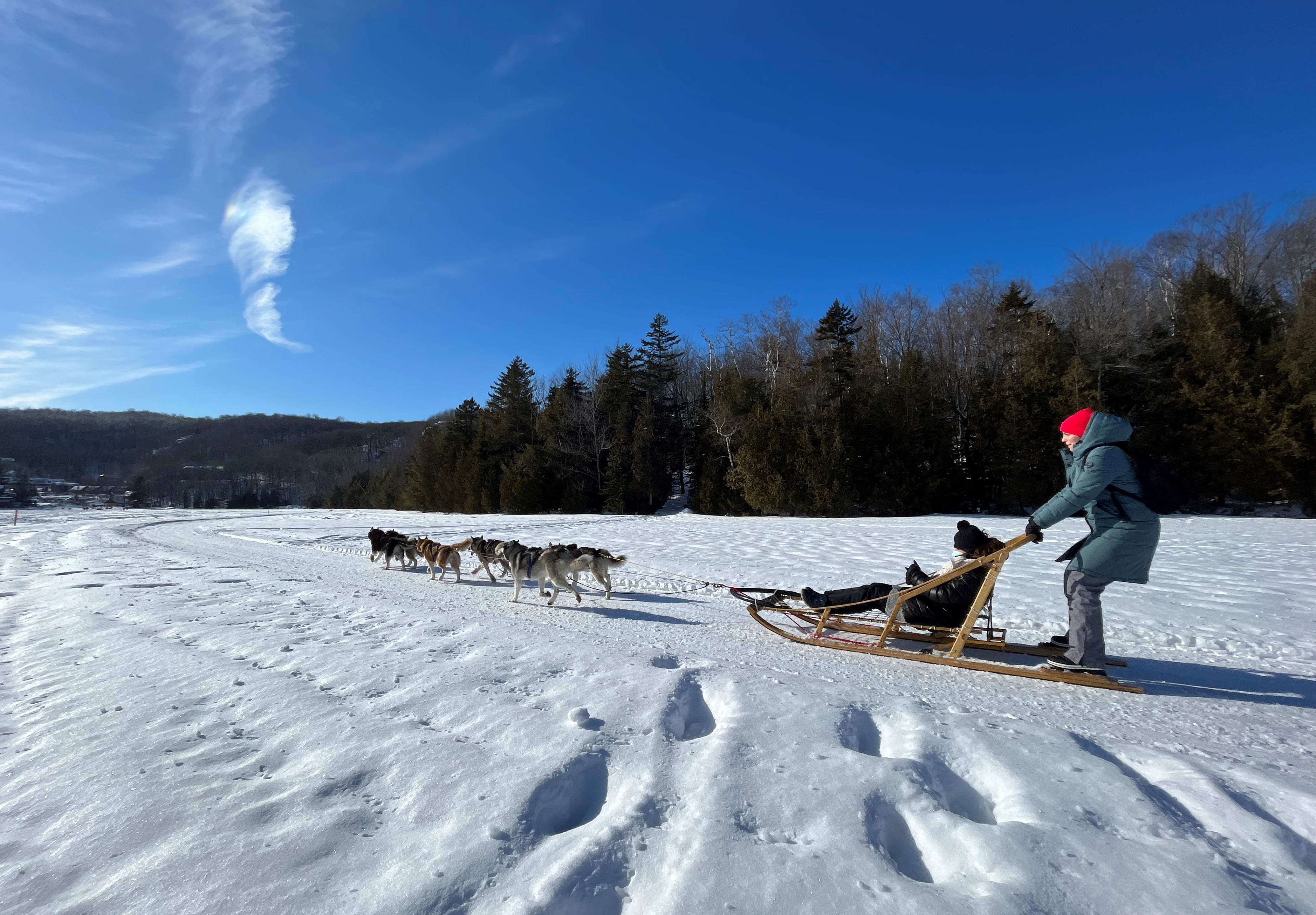
In Canada, winter brings abundant snow which makes this spot a perfect place to practice winter sports! Dog sledding in Montreal offers a unique blend of urban accessibility and winter adventures. The Quebec province's wilderness and large territory encompasses rugged mountains, dense forests, frozen lakes providing a stunning backdrop for mushing excursions...
In which destinations can you see the Northern Lights?
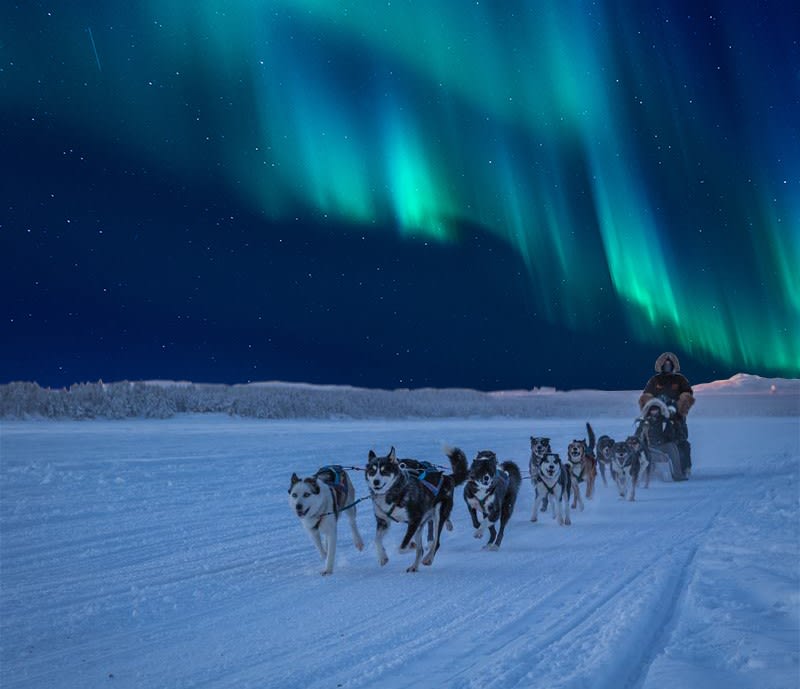
You're probably wondering if it is possible to try dog sledding at night? Of course you can, and you'll even have the chance to enjoy a breathtaking view of the Northern Lights. This spectacular natural phenomenon, also known as Aurora Borealis is visible in six Nordic countries: Finland, Norway, Sweden, Iceland, Northern Canada and Scotland. However, you can also admire them in Northern Japan, Russia and Alaska.
With appropriate timing, you’ll be able to combine the pleasures of admiring the Northern Lights while on a thrilling night dog sled ride. For example, if you head to Finland for this winter, you can try this unfrogeattable experience in Rovaniemi: the Northern Lights and husky dog sledding activity!
Why you should try the night dog sledding excursion? Because you just need to relax and enjoy the thrill of riding through the surrounding wilderness and nighttime winter landscapes! Your guide will be driving the dog teams, so you just have to enjoy the beautiful colors in the winter sky.
Can you still ride on a dog sled without snow?
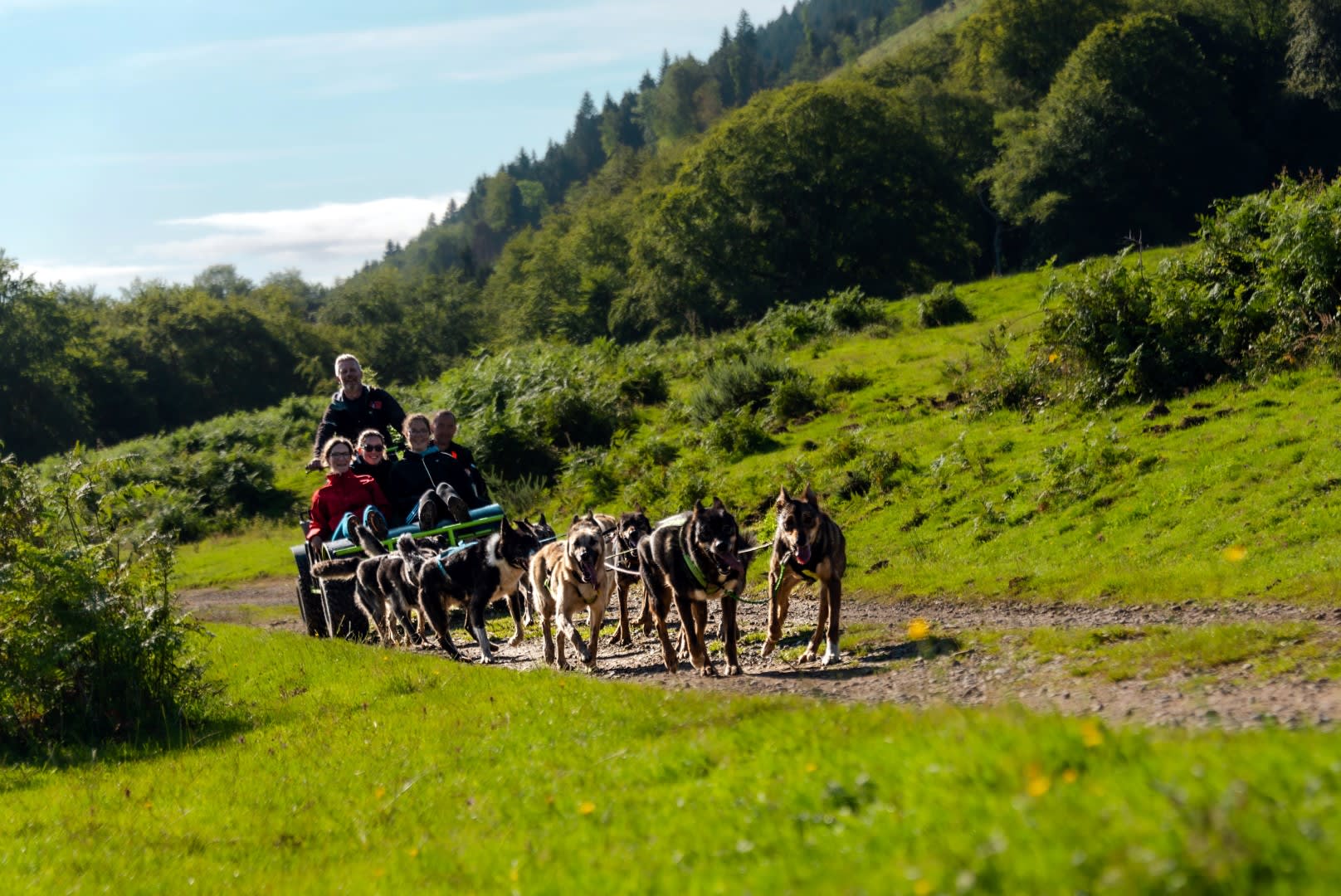
Yes, it is possible. When there is no snow, the blades can be replaced by wheels. The sled then becomes a cart that the dogs can pull- called a Cani-Kart. There is even a derivative of this, called Cani-Scooter!
Explore mushing in the Hautes-Pyrénées, close to La Mongie in France and get away from the crowds and enjoy a change of scenery just ten minutes away by car from Bagnères-de-Bigorre. This 810-meter-high pass provides a 360-degree panoramic view of the Baronnies and a magnificent glimpse of the Pic du Midi. You can discover it thanks to this cani-kart tour of the Col des Palomières.
What weather conditions could prevent your dog sled trip?
Some weather conditions can prevent sledding activities from happening on a given day. Heavy rain or storms can cause cancellations.
If the weather is too warm and there isn’t much snow, you will have the option to ride in the Cani-Kart.
Do you get to feed the dogs?
In most cases, you do not. Some activities do offer this option, so if you’re looking to feed the dogs make sure to ask. It is not a good idea to give them anything if not specifically directed to do so by the mushers. This is because if you give them something they aren’t used to it, can upset their stomachs.
Are you allowed to take photos with the dogs?
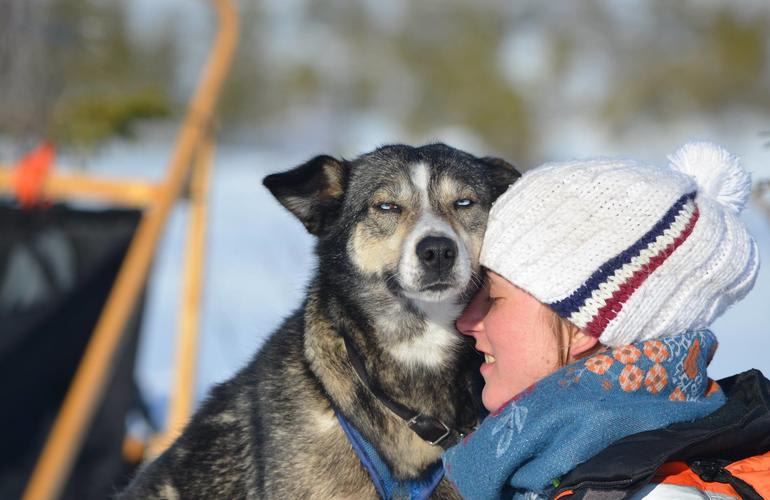
Yes of course, and you can even go see the dogs before the hike and take a selfie with them to get better acquainted! So, don’t forget to take your smartphone or a camera with you. By being respectful and gentle with the animals, you can capture memorable moments with the sled dogs while ensuring their safety and well-being during your experience.
How much does a dog sled trip cost?
Everything depends on the destination and the duration of the trip. Dog sledding can be fairly expensive because it costs a lot to properly feed and care for these dogs. They are athletes and need to be treated as such. Therefore, prices reflect this. Prices average around €180 per person for a half-day adventure in Tromso, Norway. Some activity options reach over €2000 for a 6-day expedition through the snowy Taiga in Tromsø, Norway for example. However you can find affordable activities that will cost you around 80€ for example with the dog sledding in Koppera, Norway.
Can the dogs get hurt during mushing?
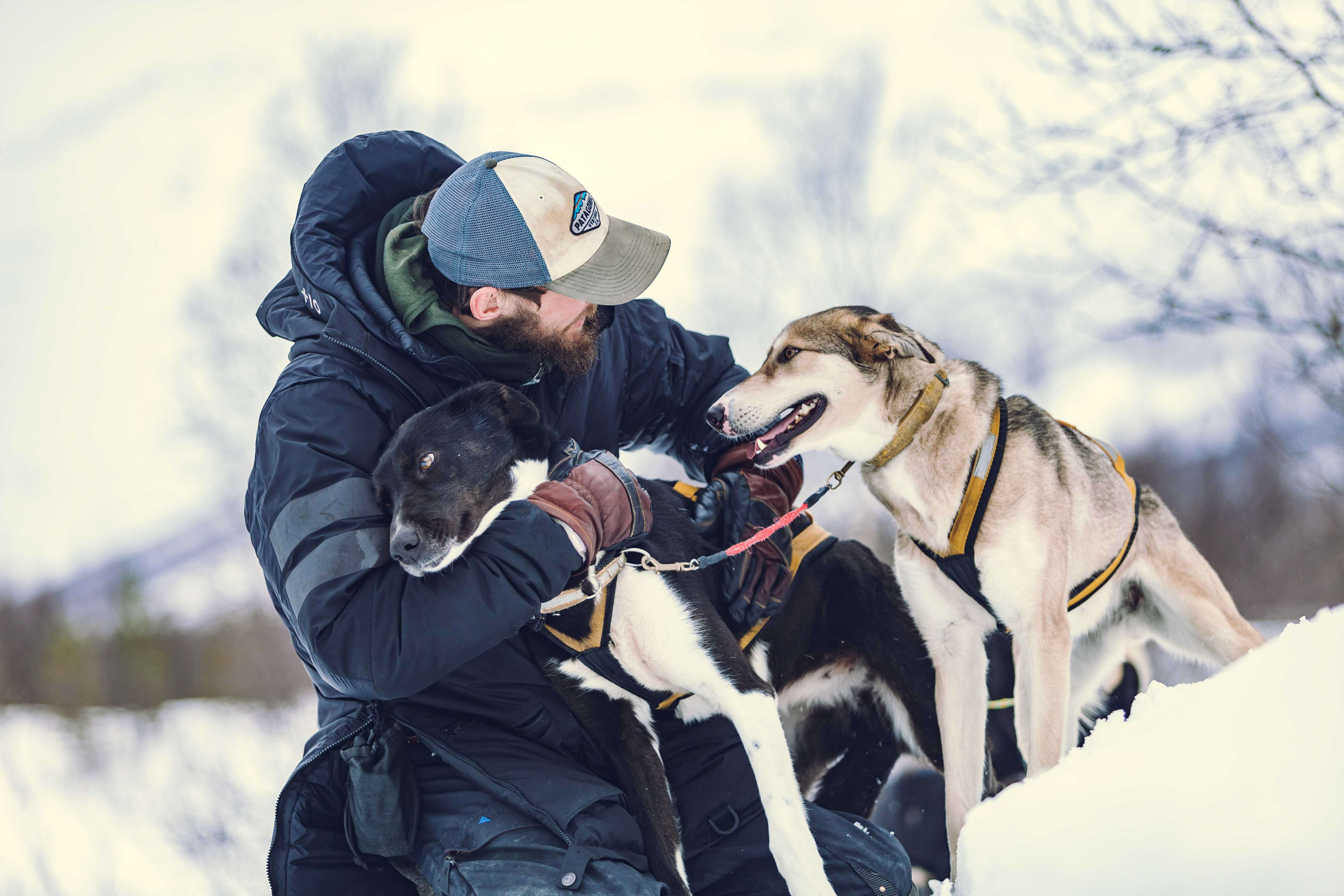
While injuries can occur in any physical activity, the fully responsible musher prioritise the health and safety of their dogs. Moreover, we are committed to offering activities that meet the standards of safety and respect for animals.
It's important to acknowledge that despite precautions, the risk of sled dogs getting hurt does exist: they can get into scraps, and get their paws injured on the ice, but it's rare. If it happens, the guides are very experienced and know how to deal with these potential issues: they are ready to take proactive measures to mitigate risks and provide the best possible care for their canine athletes.
About a possible passenger accident, you’re already insured for this activity and once you’re sitting in the sled, there’s very little that could happen to you.
Is dog sledding dangerous?
In dog sledding, like in many outdoor activities, the professional guides are dedicated to ensuring the safety of participants and the well-being of the sled dogs. Their expertise allows them to manage any risks associated with the activity effectively, providing proper instruction, guidance and supervision throughout the excursion.
However, if you suffer from back pain or if you are pregnant, it’s probably better to avoid going on the dog sled. In fact, the rugged terrain and potential sudden movements on the sled may pose risks for those with certain health concerns. Therefore, you should consult with a professional before participating in dog sledding to ensure it's appropriate for your specific circumstances. Safety is paramount, and it's essential to prioritize your well-being when considering participation in adventurous activities like dog sledding.
Want to sled into future adventures?
If this article has sparked your curiosity or inspired you to explore the world of dog sledding further, we invite you to discover our selection of the best dog sledding films for a glimpse into the exhilarating experiences that await. Alternatively, if you're ready to turn your inspiration into action, consider joining us for one of our snowy adventures like!
Or, if you seek a different kind of wildlife encounter by staying connected with animals, explore our wildlife experiences, where you can immerse yourself in the natural wonders of the wilderness and perhaps meet some wild inhabitants... Whatever your adventure preferences may be, we look forward to helping you create unforgettable memories in the great outdoors...